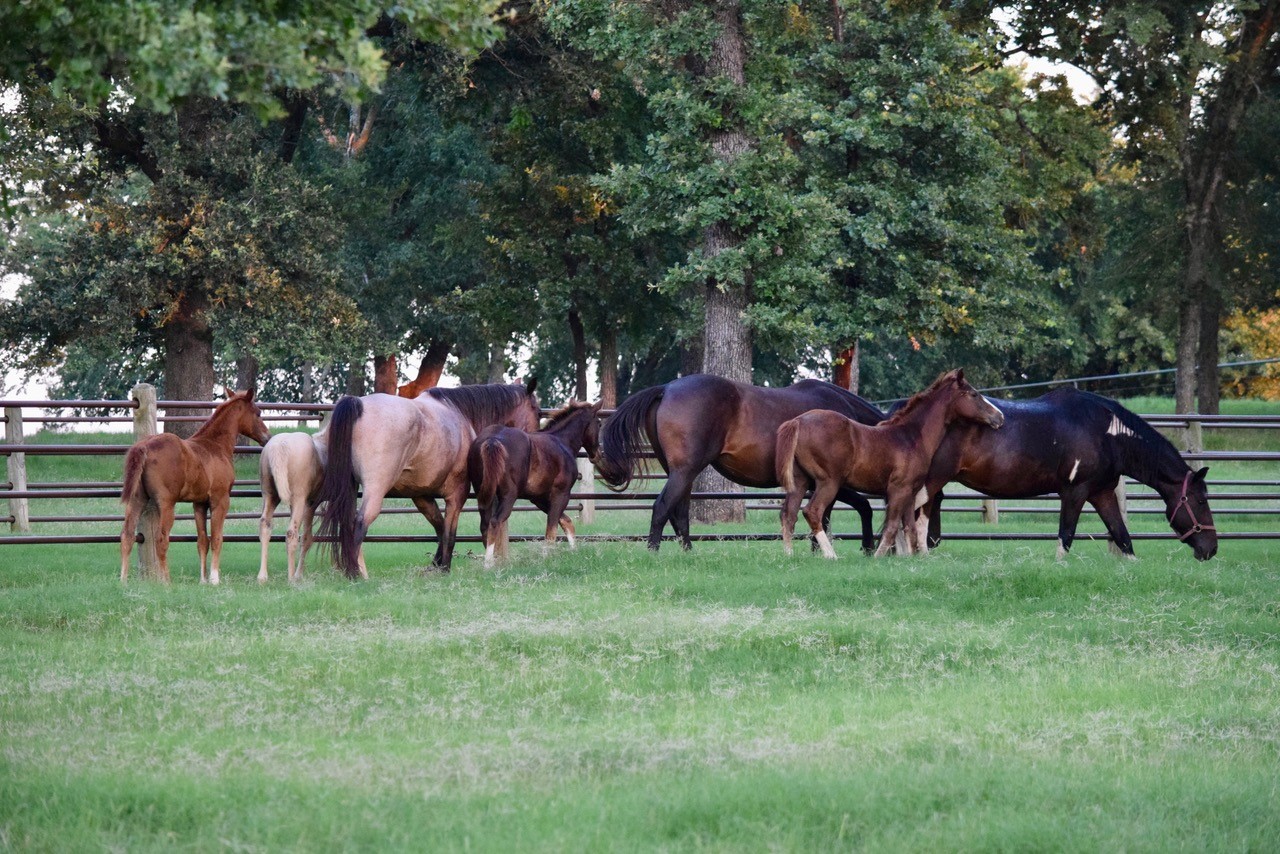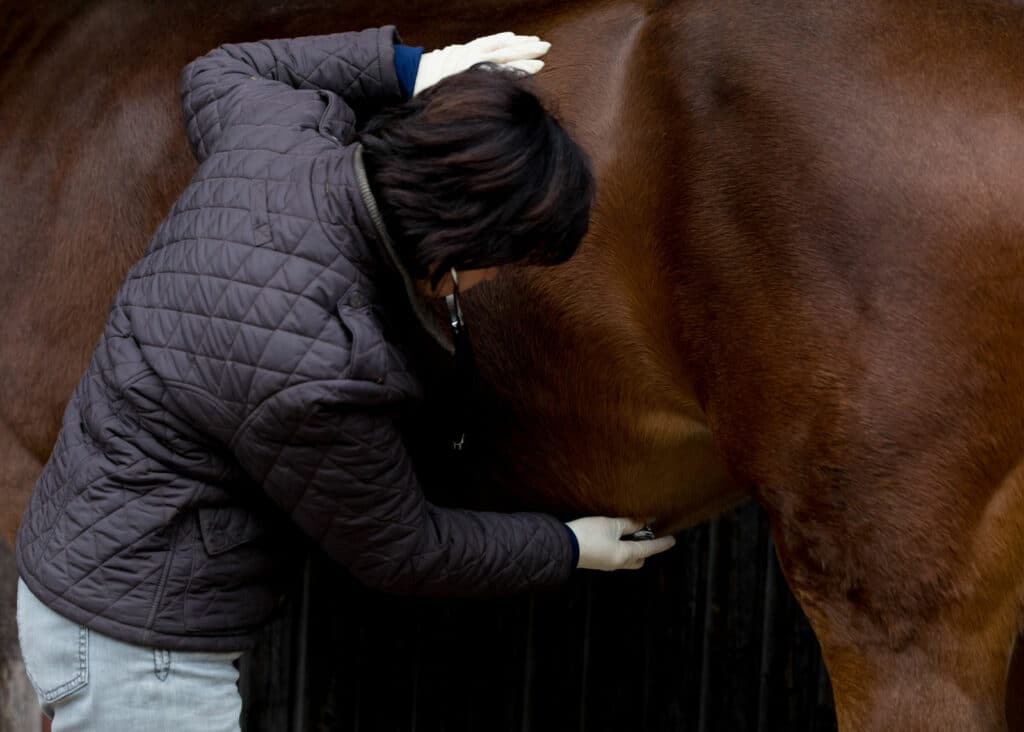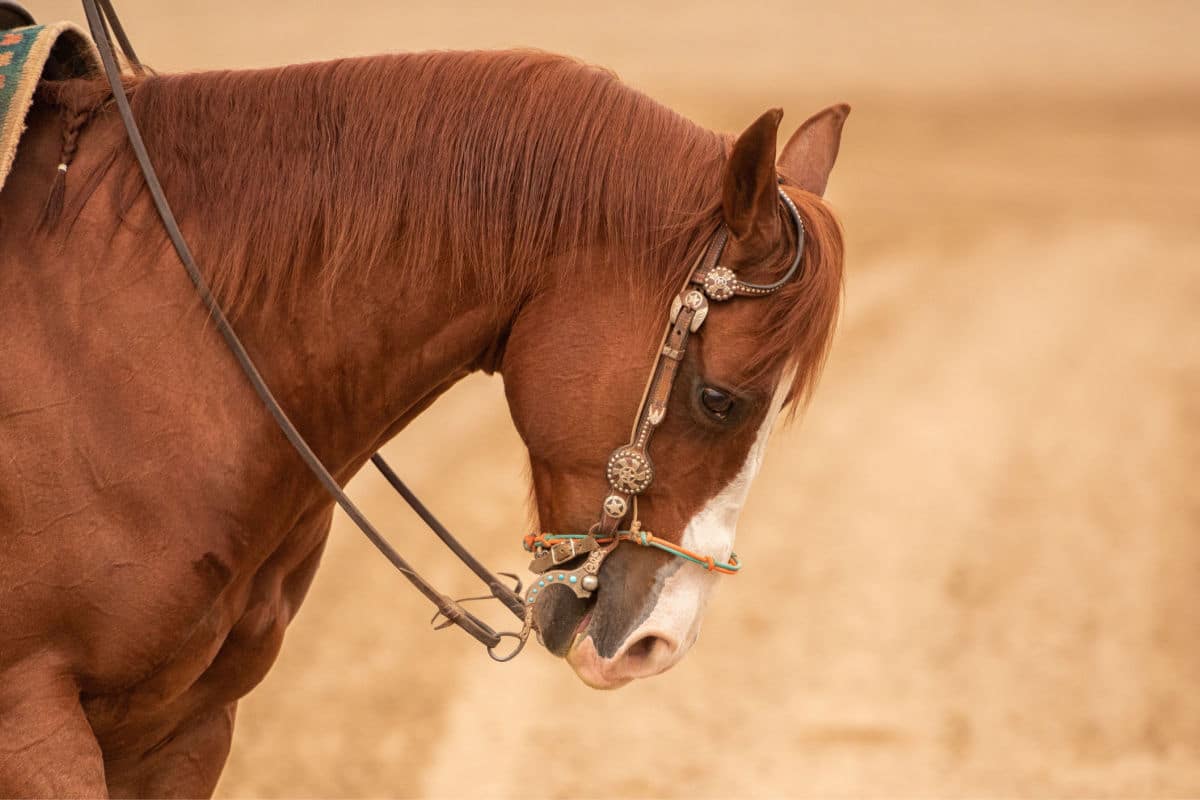There’s a lot of conventional wisdom out there about diagnosing and treating ulcers – yet ulcers continue to be a prevalent problem for horses. In order to keep your horse at its healthy best, it’s important to understand the signals your horse is giving you as well as all of the options for treating and preventing ulcers. The “Your Horse Ulcer Free” series will equip you with the knowledge to recognize, treat, and ultimately prevent equine ulcers in a better, more lasting way.
In Part 1: Overview of Equine Ulcers, we filled you in on the basics of equine ulcers. Today we move on to discuss gastric ulcers specifically.
The Anatomy of the Equine Stomach and Gastric Ulcers
Simply, a gastric ulcer is a wound in the lining of a horse’s stomach (and by stomach we literally mean that specific organ that begins the process of breaking down food – not the entire digestive tract).
The lower two-thirds of the stomach, called the glandular portion, is highly protected against the acid that resides there. This is necessary, as the proton pumps that produce hydrochloric acid, and other glands that secrete enzymes to break down food, are at the very bottom. The upper third of the stomach, called the non-glandular or squamous portion, only has a thin mucosal lining to protect the flesh. There is a distinct line separating the lower and upper regions called the margo plicatus.
In general, the acidity levels are very high at the bottom of the stomach and are increasingly neutral as you move to the top. The constant grazing of small amounts of forage helps offset the effects of the acid. The regular chewing of grass and other forage produces saliva, which is alkaline and so helps neutralize the acid, along with the hay itself.
Most gastric ulcers in horses occur just above the margo plicatus, or in the upper third of the stomach.
Potential Causes of Equine Gastric Ulcers
Concrete evidence for what causes ulcers in horses is nebulous at best. Generally accepted theory is that acid, stress, and occasionally bacteria can induce gastric ulcers.
The honest answer is that we don’t really know for sure.
We do know that gastric ulcers are more prevalent in horses that regularly face the stresses of training, travel, and competition. We do know that ulcers will go away, at least temporarily, when stomach acids are suppressed. And we do know that bacteria cause ulcers in humans.
Ulceration first requires the mucosal lining to be compromised. There are several ways this protective lining can be compromised and, as a result, ulcers induced:
- acid splashing above the margo plicatus. This happens because horses produce stomach acid constantly. If they aren’t constantly grazing these acids aren’t buffered by the trickle of forage and saliva. Some believe this is enhanced during exercise when the acids in the lower portion of the stomach are physically pushed up into the unprotected non-glandular portion of the stomach. This is reflected in the fact that most ulcers occur in the upper, non-glandular mucosa adjacent to the margo plicatus.
- parasites colonize just above the margo plitacus. Bots specifically tend to set up house in this area, and recent studies show that they are growing resistant to anthelmintics and are on the rise. The pits these bots can leave behind are open lesions which are likely also highly vulnerable to the acid.
- bacteria invades. For years people assumed that bacteria couldn’t survive in the acidic environment of the stomach. However, bacterial strains that actually thrive there have been discovered in humans. Thus, it is possible that particular strains of bacteria could also survive in the horse’s stomach, which could be a culprit in gastric ulcers in horses as well.
Listening to Your Horse: Equine Gastric Ulcer Symptoms
If only your horse could turn to you and say, “My stomach hurts!” correctly diagnosing gastric ulcers would be so much easier. But it can’t, and it’s not. The often-subtle signs that your horse is suffering from gastric ulcers are easily misinterpreted – but can also signal a lot of other medical or even training issues.
Regardless, because gastric ulcers in horses are so prevalent, it is worth considering the typical symptoms:
- weight loss and/or general decline in body condition
- resistance under saddle
- irritability and other changes in attitude
- lack of energy and stamina
- loss of appetite
- behavior indicating discomfort, such as pawing or laying down excessively
- Wood-chewing and cribbing (windsucking)
All of these are ways your horse tells you it’s uncomfortable. Even vices like cribbing and wood-chewing, generally thought to be behavioral, are ways a horse can alleviate the pain of ulcers. Chewing on wood releases saliva, which neutralizes stomach acids. And windsucking fills up the stomach with air, thus dropping the acid level.
Also be aware that many of these symptoms may also be signals of a hind gut issue or colonic ulceration. Please consider asking your vet for a complete diagnosis before you commence treatment.
The Problem with Diagnosing and Treating Gastric Ulcers
Diagnostics and treatment for gastric ulcers is pretty standard these days. Preferably, the horse’s stomach is scoped first to confirm the presence of ulcers, and then it is given a round of medication that suppresses the stomach acids allowing the ulcers to heal. However, endoscopy is invasive and expensive, and not all veterinarians have the needed equipment. So instead, medication is prescribed right off the bat as a treatment and a diagnostic; if it “works” it was gastric ulcers.
There are a few key problems with both endoscopy and acid-suppressing medications, however:
- scoping a horse’s stomach requires him to go without food for 12 hours prior to the procedure. And this leaves the horse’s stomach empty and the sensitive mucosal lining subject to the acids. So diagnosing gastric ulcers this way could potentially lead to them.
- typical drugs can interfere with the digestion process and aren’t always a long-term cure. Common pharmaceutical treatments for ulcers, such as the drug omeprazole, shut down the acid pumps in the stomach. While this gives ulcers a chance to heal without the irritation, it also interferes with the digestion process. Undigested starch is more likely to reach the hindgut, which can lead to the development of ulcers in the colon, and even colic. Plus, such treatments are only temporary because they don’t address the root causes of ulcers.
Fortunately for your horse, by making lifestyle and dietary changes to support a healthy digestive system, you can avoid gastric ulcers in the first place.
Next: Colonic Ulcers in the Hind Gut
So, is your horse suffering from gastric ulcers or from colonic ulcers hidden in the hindgut? Be sure to come back for the next article in the Your Horse Ulcer-Free series: Colonic Ulcers in the Hindgut.
We will conclude the series with extensive information on diagnosis, treatment, and prevention, so be sure to subscribe to our articles so you don’t miss any of this information.



